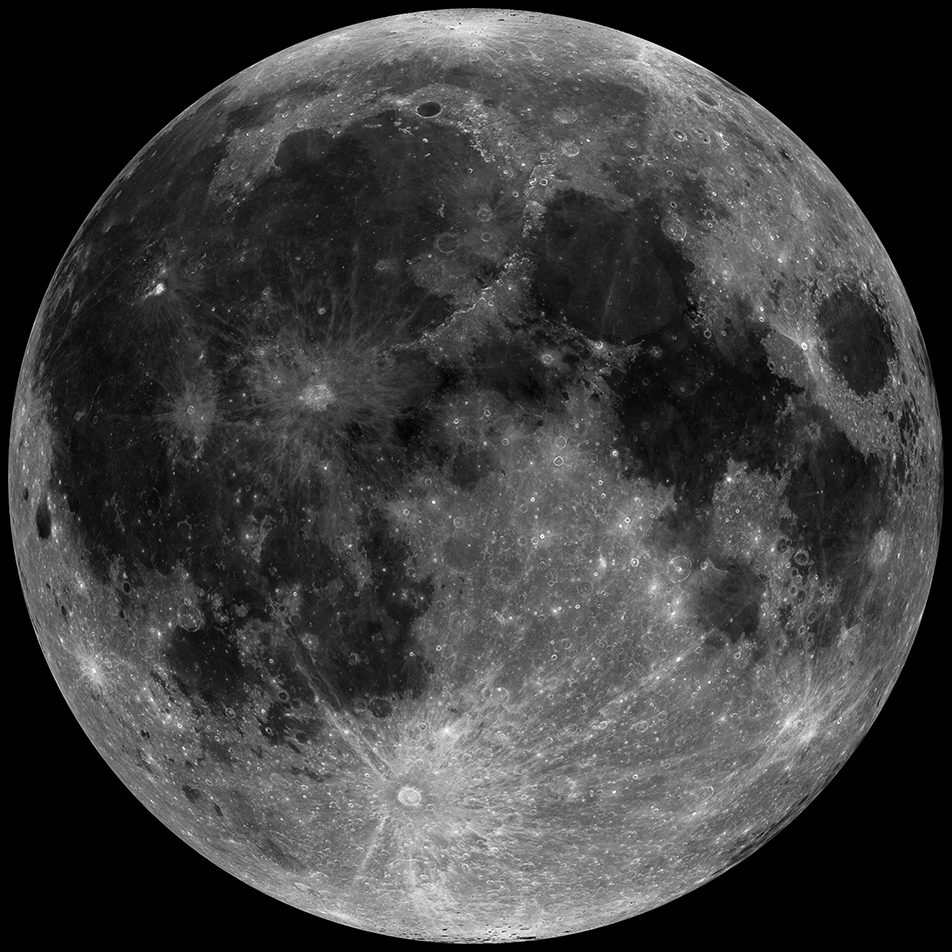
Each full Moon cycle requires 29.5 days. This means that, in every month with 30 or 31 days – that is, every month except February – two full Moons can occur. The first full Moon of 2018 occurred on 1 January 2018. The second will take place early on 31 January 2018.
The second full Moon in a calendar month is often called a "blue Moon". The name has nothing to do with color; like almost all full Moons, blue Moons look bright white with darker blotches (the mare).
The second full Moon of January 2018 will, however, be different, for a lunar eclipse will occur. Lunar eclipses – when the Earth blocks the Sun as seen from the Moon – always occur at full Moon.
If you were an astronaut on the Moon on 31 January, the landscape around you would turn reddish or brownish as the disk of the Earth slowly covered the Sun. As the lunar eclipse became total at your location, Earth’s atmosphere would appear as a bright reddish ring about four times larger than a full Moon appears in the Earth’s sky. The light from the ring – the light of all the sunsets and sunrises happening on Earth – would rapidly transform the bright white lunar landscape around you into a spooky twilight place.
Back on Earth, the eclipsed Moon will appear dim with reddish or brownish hue. It will be at least partly visible over a wide area. Most of Australia will see the entire eclipse, along with much of Asia. For western North America, the eclipse will start early in the morning and be near its end as the Sun rises and the Moon sets.
As you admire the blue Moon lunar eclipse, spare a thought for the Lunar Reconnaissance Orbiter (LRO) spacecraft. LRO reached lunar orbit on 23 June 2009. It began a one-year primary mission on 15 September 2009. It orbits the Moon today in its third extended mission, and continues to return crucial scientific measurements from its seven instruments. Additionally, other countries request that LRO make observations to help them plan their own pioneering missions.
Solar-powered LRO continues to function almost perfectly, but it is showing signs of age that were predicted at the time it was launched. Of greatest concern during the total lunar eclipse is LRO’s battery. As expected after more than 8 years in space, the battery can hold only about 70% as much charge as it could at launch.
During the daylight side of LRO’s roughly two-hour orbit, its solar arrays charge the battery that power the instruments and spacecraft systems. During the night portion of the orbit, the battery powers instruments and spacecraft systems, such as heaters and its computer. It is this cycling between day and night that is responsible for battery degradation, and there is no way to avoid it.
During the upcoming total lunar eclipse, LRO will move from lunar night into what should be lunar day – but the Earth will be hiding the Sun, so the solar array will be unable to charge its battery. Then it will move into lunar night again. On its next daylight pass, it will experience about 40 seconds of twilight, then move back into the eclipse shadow cast by Earth. All this means that, for about four hours, LRO’s solar array will generate almost no power.
LRO engineers will turn off instruments, heaters, and everything else they can to protect the battery from undergoing too deep of a discharge, and leaving enough power to be able to respond to unanticipated events during the eclipse.
Temperature is also a concern during this eclipse. The degraded battery means that LRO cannot operate its full complement of heaters. Based on data from previous eclipses, the inside temperature of LRO will plummet to about -5°C (about 23° F), and the relatively unprotected LROC Wide Angle Camera will have its core temperature fall to about -30°C (-22°F).
Engineers are optimistic that LRO, the only U.S. spacecraft currently exploring the Moon, will happily survive the 31 January total eclipse, its eighth since reaching the Moon in 2009. A ninth total eclipse will test its mettle in July of this year, then a tenth in January 2019. After that, though, LRO will face no more total eclipses until May 2021.
If you want to see the eclipsed Moon up close, the LROC team will have a telescope setup for public viewing at the western edge of the ASU Tempe Campus Apache Blvd parking structure (Apache Blvd and College Ave, 5:30 am to 7:30 am 31 January). The Moon will be in total eclipse (and red) from 5:51:47 am to 7:07:51 am, with the Moon setting at 7:28 am.
If you miss the January blue Moon you won't have long to wait - March of 2018 also has two full Moons! Talk about once in a blue Moon, two blue Moons in one year! That won't happen again until 2037!
In the meantime explore the rich variety of shades of grey visible with a full Moon.
Related Featured Images
2017 Eclipse as Seen from the Moon
Published by Mark Robinson on 30 January 2018